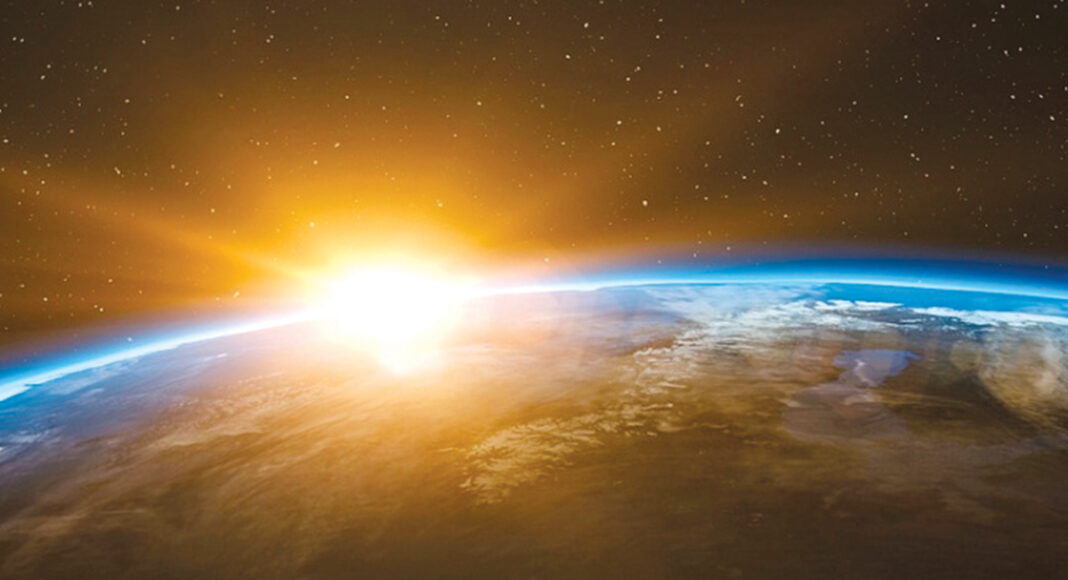Museum exhibitions often are designed with niche interests in mind. But the newest installation at the Museum of Art & History in Santa Cruz is going for a much broader audience—that is, anyone who plans to live beyond, say, the 2020 presidential election.
It’s called Beyond the World’s End, and it focuses on exactly what kind of world awaits all of us.
Beyond is the culmination of a year-long research project spearheaded by art historian T.J. Demos, a faculty member at UCSC and the director of the university’s Center for Creative Ecologies. It offers up a number of scenarios from various artists and visionaries about what to expect from the near future—not exactly predictions, but rather new ways of thinking about the broad social, cultural, political, and especially ecological change on the horizon.
Demos says that contemporary pop culture’s obsession with the future is too invested in lurid Walking Dead scenarios of apocalypse. “I think it’s pretty clear we’re surrounded by narratives and images of doom and catastrophe within pop culture, television and the news internationally,” he says. “Across all sectors, there’s a deep sense of negativity and nihilism. It’s fatalism, a sense of giving up, like there’s nothing to hope for and we might as well get used to it.”
Not that the new MAH exhibit is putting forward some kind of denialist, don’t-worry-be-happy future; on the contrary, it takes seriously the turmoil of inevitable climate change and ideas on how to adapt to new climate models. But, says Demos, the cultural obsession with pop-apocalypse represents a lack of imagination of what the future may actually have in store.
“The exhibition is an attempt to switch gears and open up new horizons of possibility in the future,” he says. “Science fiction or experimental artistic practice offers places for the imagination, for open-skies thinking about the future, about what kind of alternatives we could have that are very different from the present.”
The orientation of the exhibition is toward perspectives offered up from the experience of populations that have historically been oppressed, enslaved, or colonized. Demos says that lessons of survival of the globe’s oppressed can serve as resources for a challenging future for everyone.
“For many people today, the apocalypse is in the future,” he says. “But for many communities—indigenous people or African-Americans—it’s hundreds of years old. They’ve already lived through the apocalypse.”
Beyond the World’s End, which opened last week at the MAH’s third-floor Art Forum Gallery, features eight projects from individual artists and collectives, all presented in various forms of artistic imagery, text, and video.
Among the presentations in the exhibit are:
—Krista Franklin’s fine art book SEED (The Book of Eve), inspired by the work of the late African-American sci-fi author Octavia Butler, and employing various types of collage, poetry, and fine-art printing.
—Amy Balkin’s People’s Archive of Sinking and Melting, which collects artifacts from the around the world that illuminate what life will be like in a world of climate change.
—An installation from the queer indigenous feminist performance group SFHQ that features an audio piece imagining a conversation between three prominent figures of the past about the evolving future.
—A site-specific piece by Santa Cruz artists Helen and Newton Harrison at the UCSC Arboretum called Future Garden, which offers up an ecological proposal for the future.
The exhibition has been a couple of years in the making, Demos says. Its themes and preoccupations dovetail with what he has been teaching on campus and the mission of the university’s Center for Creative Ecologies.
“It’s not an exhibition that presents solutions,” Demos says. “It’s not a clear road map for a way forward. It’s more like experimental thinking about what any kind of solution needs to include, which is namely a dedication to forms of inclusivity and social justice, based on the history of disaster, relating to slavery and racism or indigenous genocide.”
The exhibition will be supported by a free film series called “Radical Futurisms” to take place Wednesdays through March 18. The series presents a collection of short films that present ideas about the future and what it holds.
What the exhibition seeks to do is present some alternatives beyond the strict binary of climate denialism vs. flesh-eating zombies in the streets, Demos says.
“There’s been lots of different positions on hope,” he says, “and I’ve thought about it a lot in terms of the commodification of hope and, of ‘cruel hope,’ that is, hope that always end in letdown. I remained committed to a kind of knowing hope, where hope is based on engagement and practice and action. This isn’t a hope of sitting back and fantasizing about things. It’s hope that can enable us to participate more actively in the world. If we abandon hope, then really we’re left without anything to guide our actions.”














